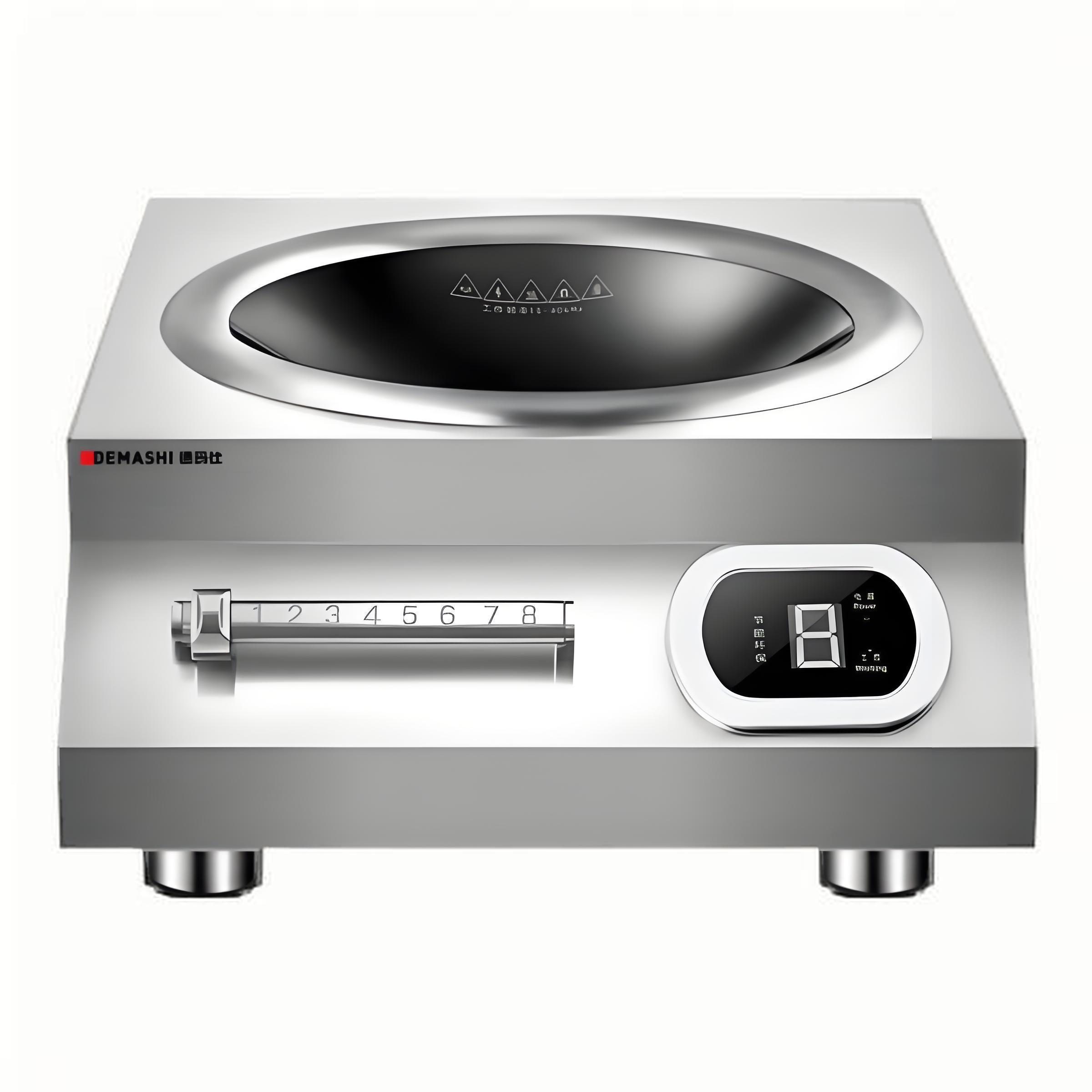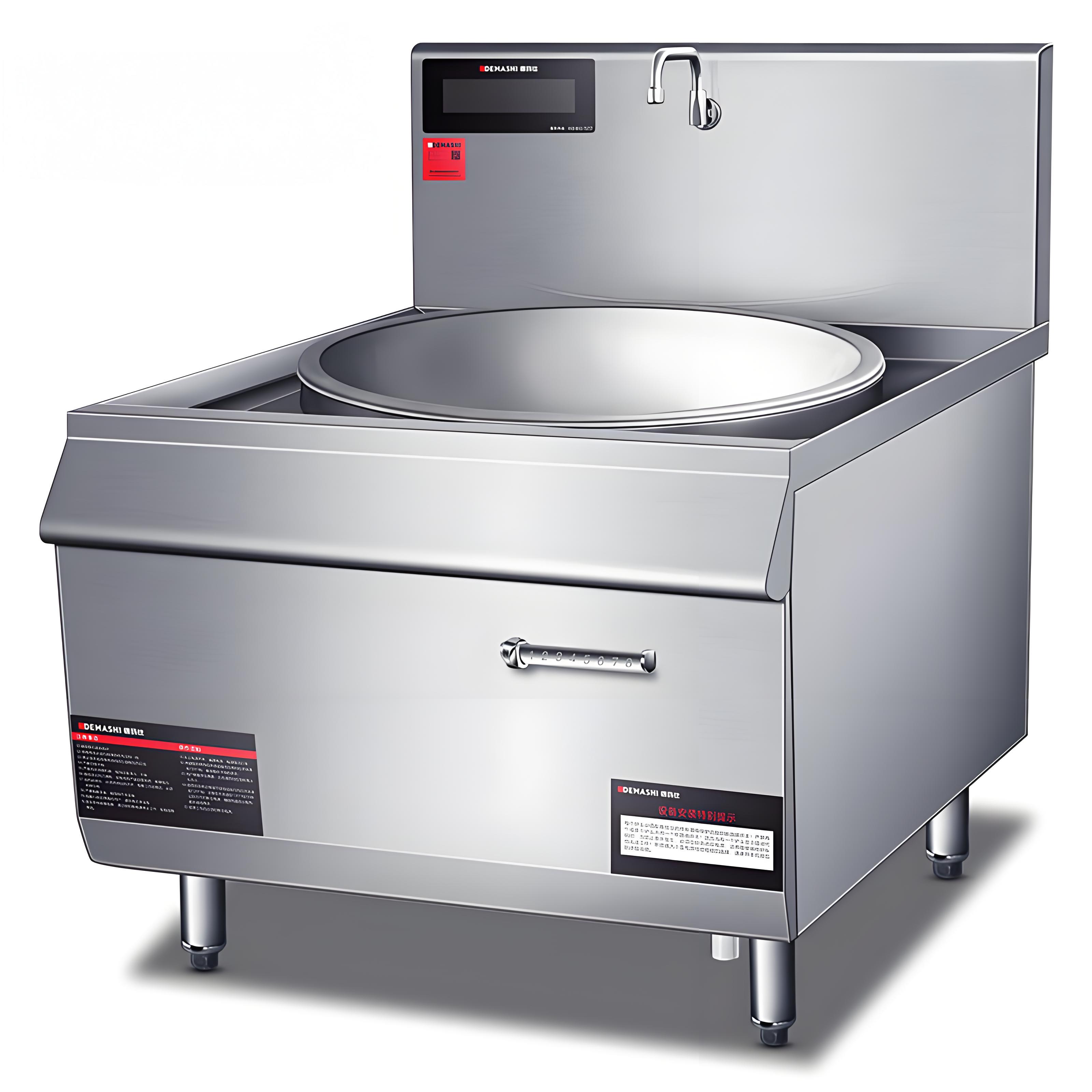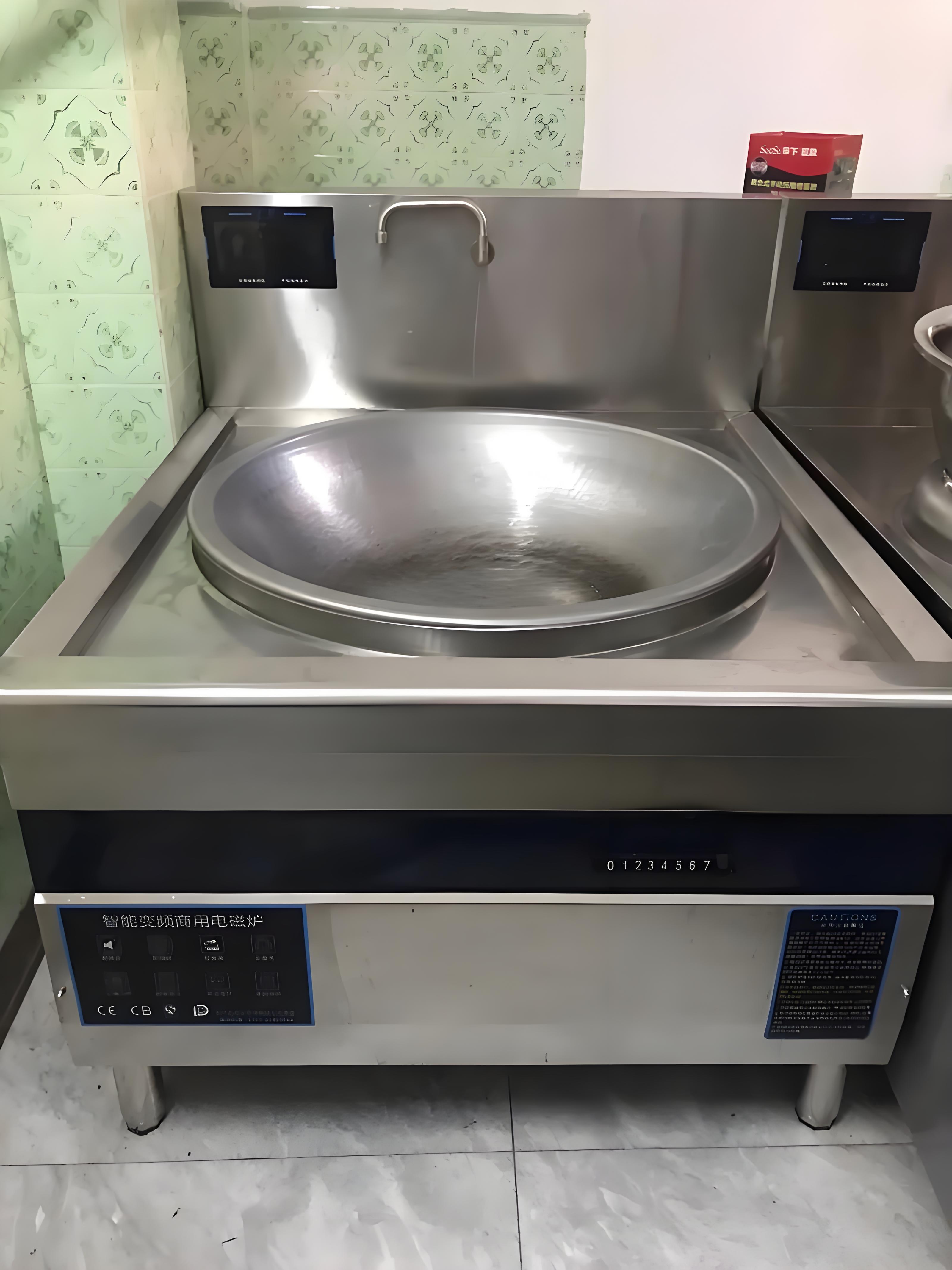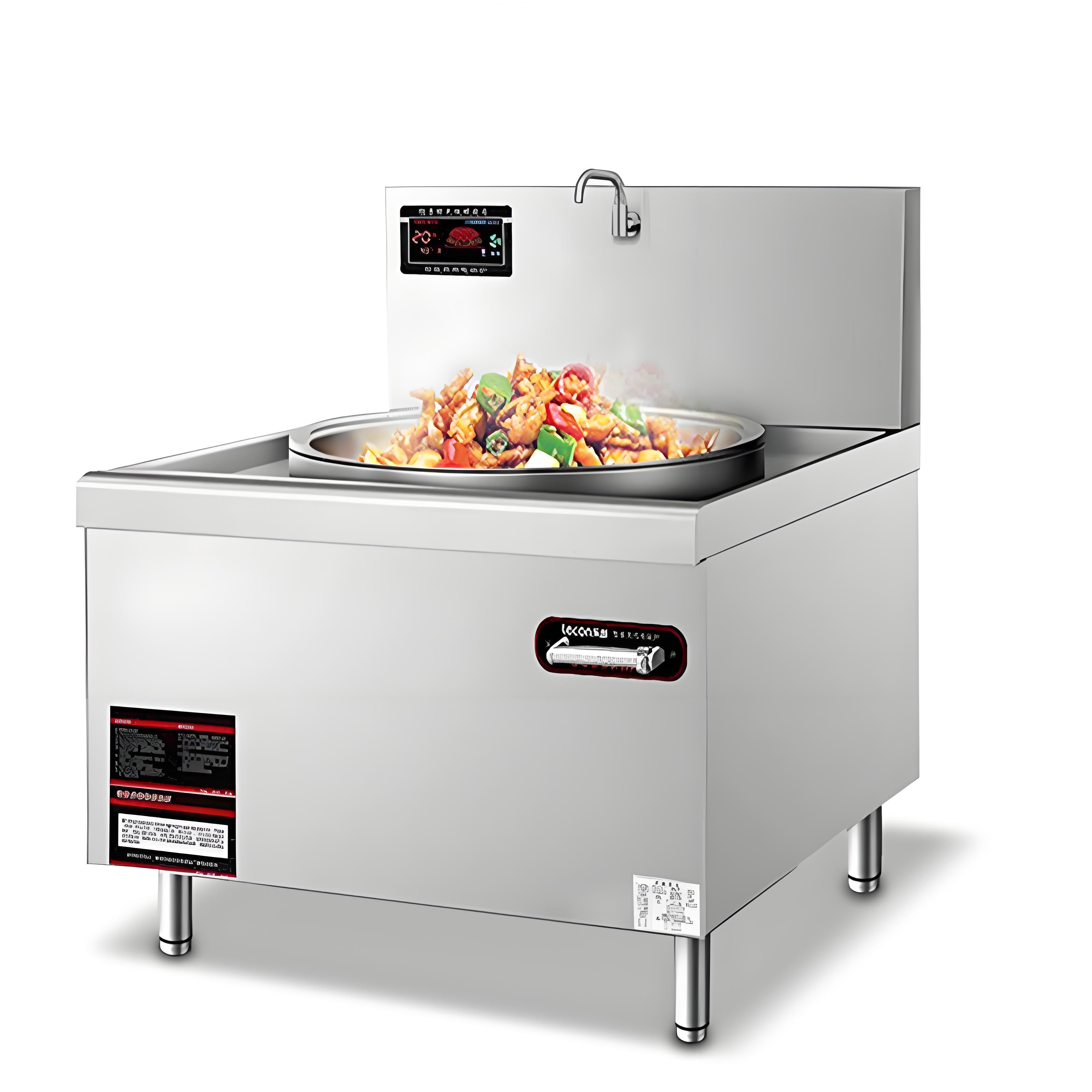Having been in the catering equipment industry for years, I often get asked by friends and clients, “What is the typical power of commercial induction cookers?” This question seems straightforward but hides a lot of nuances. When choosing a commercial induction cooker, power not only affects cooking efficiency but also impacts electricity costs, kitchen layout, and even the taste of dishes. Today, I’ll dive deep into the power selection of commercial induction cookers from an industry perspective, combining real-world cases and data to help you find the most suitable equipment.
1. Basics of Commercial Induction Cooker Power
The power of commercial induction cookers is typically measured in kilowatts (kW), ranging from 3kW to 35kW, depending on the equipment type and usage scenario. Compared to household induction cookers (usually 1.5kW to 2.2kW), commercial models have higher power to meet the demands of high-intensity, continuous cooking.
Why is power so important? In simple terms, power determines the heating speed and cooking capacity of the induction cooker. Higher power means faster heating, but it also consumes more electricity and requires stricter electrical setups. Thus, choosing the right power involves balancing kitchen needs with operational costs.

2. Common Power Ranges and Applicable Scenarios
To give you a clearer picture of which power levels suit different scenarios, I’ve compiled a detailed table covering common power ranges and their corresponding applications:
| Power Range | Applicable Scenarios | Features | Recommended Cuisine/Uses |
|---|---|---|---|
| 3kW – 5kW | Small restaurants, coffee shops, fast food outlets | Moderate heating speed, suitable for low-frequency cooking, lower electrical requirements | Frying, soup boiling, light meal preparation |
| 8kW – 12kW | Medium-sized restaurants, chain eateries | Balances efficiency and energy consumption, suitable for medium-to-high frequency use | Stir-frying, steaming, hot pot |
| 15kW – 20kW | Large Chinese restaurants, hotel kitchens | Fast heating, ideal for high-intensity continuous cooking | Large-scale stir-frying, stewing, banquet cooking |
| 25kW – 35kW | Central kitchens, factory canteens | Ultra-high power, suitable for oversized cookware and mass production | Large-scale steaming, simmering, industrial food processing |
As shown in the table, power selection is closely tied to restaurant size and cooking needs. For instance, I once helped a small hot pot restaurant choose an induction cooker. Since they mainly needed it for simmering broth and cooking hot pot, a 5kW single-burner model was sufficient. Meanwhile, a Chinese restaurant chain specializing in quick stir-fries and banquet dishes opted for a 15kW dual-burner model, which ensured efficiency during peak hours while keeping electricity costs manageable.
3. How to Choose Power Based on Actual Needs?
When selecting a commercial induction cooker, bigger isn’t always better—finding the “just right” power is key. Here are some critical factors I’ve summarized for your reference:
1. Cuisine and Cooking Style
Different cuisines have varying firepower needs. Spicy, oil-heavy cuisines like Sichuan or Hunan require rapid high-heat stir-frying, so I recommend choosing 12kW or higher. Cantonese cuisine, which often involves slow simmering, can work well with 5kW to 8kW. For hot pot restaurants or soup base processing plants, 8kW to 15kW strikes a good balance between efficiency and cost.
2. Kitchen Size and Turnover Rate
The size of your restaurant and its turnover rate directly affect the intensity of induction cooker use. Small restaurants serving a few dozen tables daily can manage with 3kW to 5kW models. Larger restaurants or hotels with high guest volumes and fast turnover should opt for 15kW or higher to handle peak hours without delays.
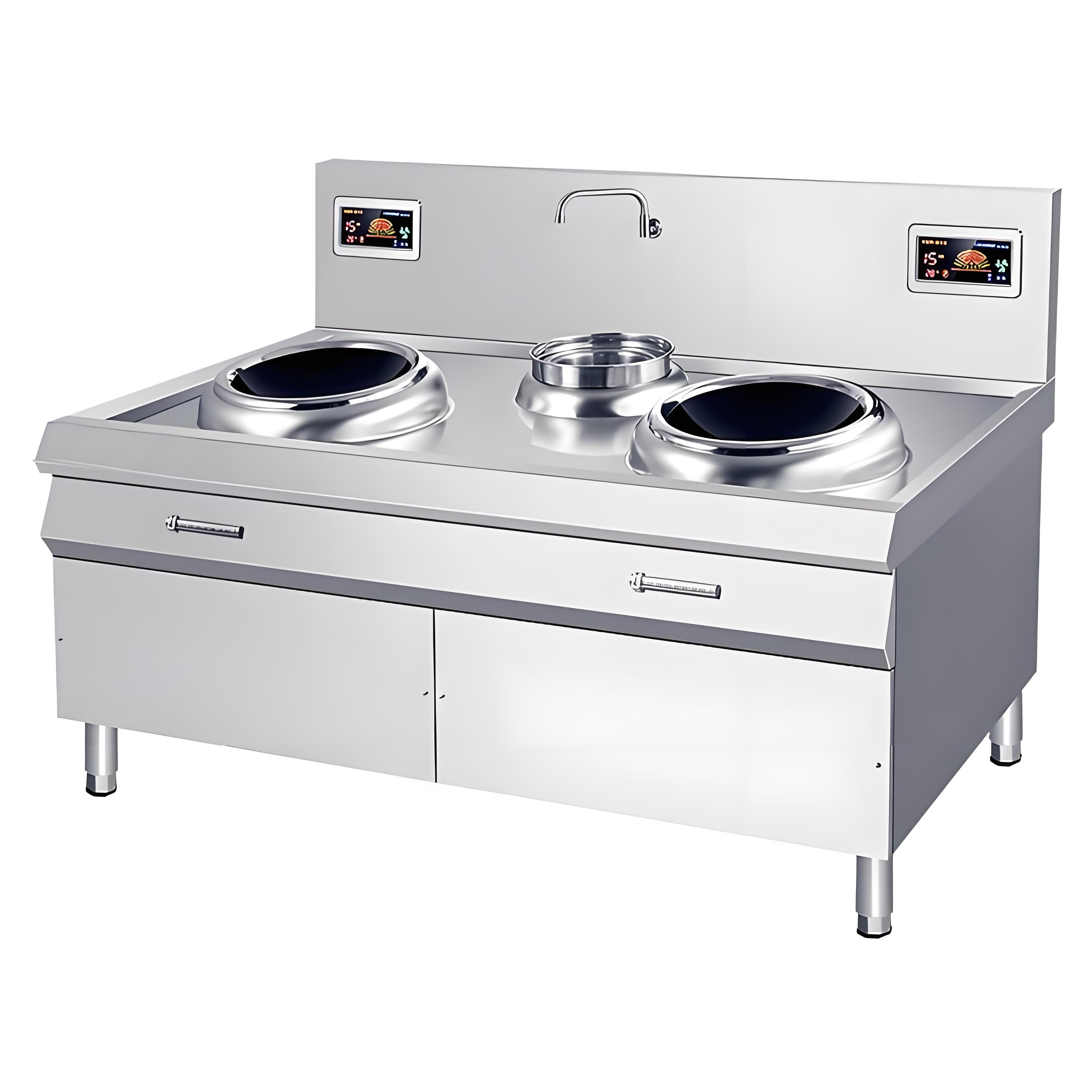
3. Electrical Conditions
Commercial induction cookers have high electrical requirements, especially high-power models. I’ve seen clients buy equipment only to find it unusable due to inadequate wiring. Before purchasing, confirm your kitchen’s power supply capacity (single-phase 220V or three-phase 380V) and cable load capacity. For example, induction cookers above 20kW typically require three-phase power and cables of 10 square millimeters or thicker.
Tip: If you’re unsure about your electrical setup, hire a professional electrician to assess it or consult the equipment supplier, who can often provide wiring upgrade advice.
4. Budget and Operating Costs
High-power induction cookers are efficient but come with higher upfront costs and electricity bills. For instance, a 20kW cooker running at full capacity consumes 20 kWh per hour, while a 5kW model uses only 5 kWh. If your restaurant operates 10 hours daily with electricity priced at $0.15/kWh, a 20kW cooker costs $30/day, while a 5kW model costs $7.50. For budget-conscious small restaurants, mid-to-low power models are a smarter choice.
4. Common Misconceptions About Commercial Induction Cooker Power
During the purchasing process, I’ve noticed many restaurant owners fall into traps that lead to choosing the wrong equipment. Here are three common pitfalls:
1. Blindly Chasing High Power
Some owners think higher power is always better and buy a 25kW cooker, only to realize their restaurant doesn’t need such intense firepower, wasting money on electricity and equipment costs. The right approach is to match power to actual needs—small fast-food joints can thrive with 5kW, no need for 15kW.
2. Ignoring Electrical Compatibility
Once, I visited a newly opened Chinese restaurant to troubleshoot equipment. They had purchased a 20kW induction cooker, but their kitchen only had single-phase power, which couldn’t support it. They had to return it and buy an 8kW model, causing delays. Always verify electrical conditions before buying.
3. Focusing Solely on Power
Power is just one aspect of performance. Cooling systems, control precision, and cookware compatibility are equally important. For example, high-quality induction cookers feature smart temperature control to maintain stable heating at high power, preventing scorching. I recommend evaluating the equipment’s overall performance, not just its power rating.
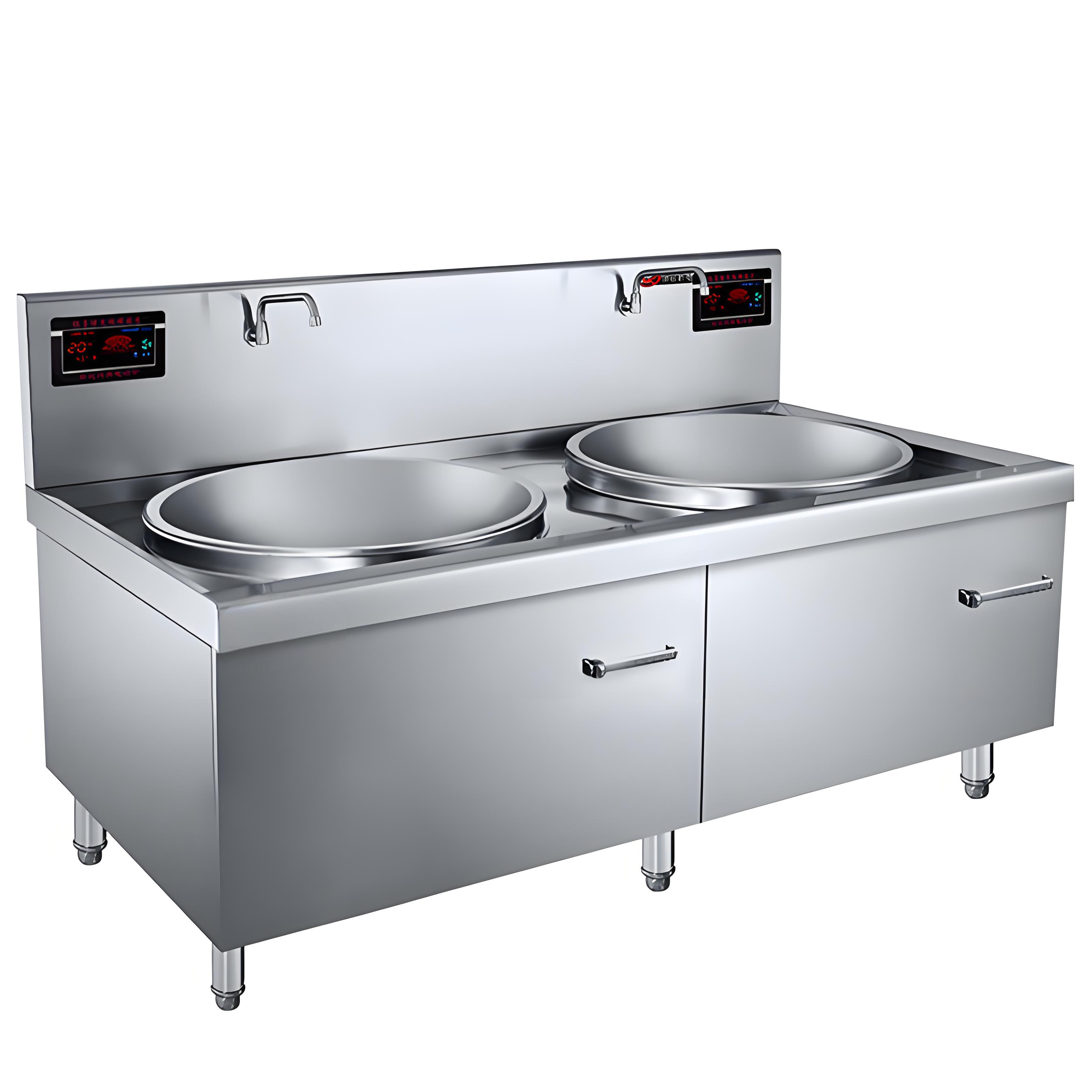
5. Real-World Case Studies on Power Selection
To make power selection more tangible, here are two real-world examples:
Case 1: Small Coffee Shop
A coffee shop near an office building offered light meals and drinks, occasionally needing to simmer soups or fry eggs. They initially considered an 8kW induction cooker, but given their short daily usage and single-phase 220V power supply, I recommended a 3.5kW single-burner model. The equipment ran stably, and electricity costs stayed low, leaving the owner thrilled.
Case 2: Chain Chinese Restaurant
A Chinese restaurant chain specializing in Sichuan and Cantonese cuisine served over 200 tables daily. Their kitchen space was limited, but they needed fast stir-frying and simmering. After evaluation, we equipped them with two 15kW dual-burner induction cookers for stir-frying and one 8kW single-burner model for simmering. This setup met peak-hour demands while optimizing electricity costs.
These cases show that power selection must be tailored to specific needs, not one-size-fits-all. I suggest listing your requirements before consulting professionals.
6. Future Trends in Commercial Induction Cooker Power
As the catering industry evolves, commercial induction cooker technology is advancing rapidly. According to the 2024 China Catering Equipment Association Report, future power designs will become smarter, with trends including:
Smart Power Adjustment: New models can automatically adjust power based on cookware size and ingredient volume, saving energy while maintaining efficiency.
Modular Design: Some high-end models support power module combinations, allowing restaurants of varying sizes to adjust flexibly.
Renewable Energy Compatibility: Certain induction cookers are starting to integrate with solar and energy storage systems, reducing electricity costs and aligning with green catering trends.
These trends suggest that future power selection will be more flexible, enabling restaurant owners to find efficient solutions tailored to their needs and budgets.
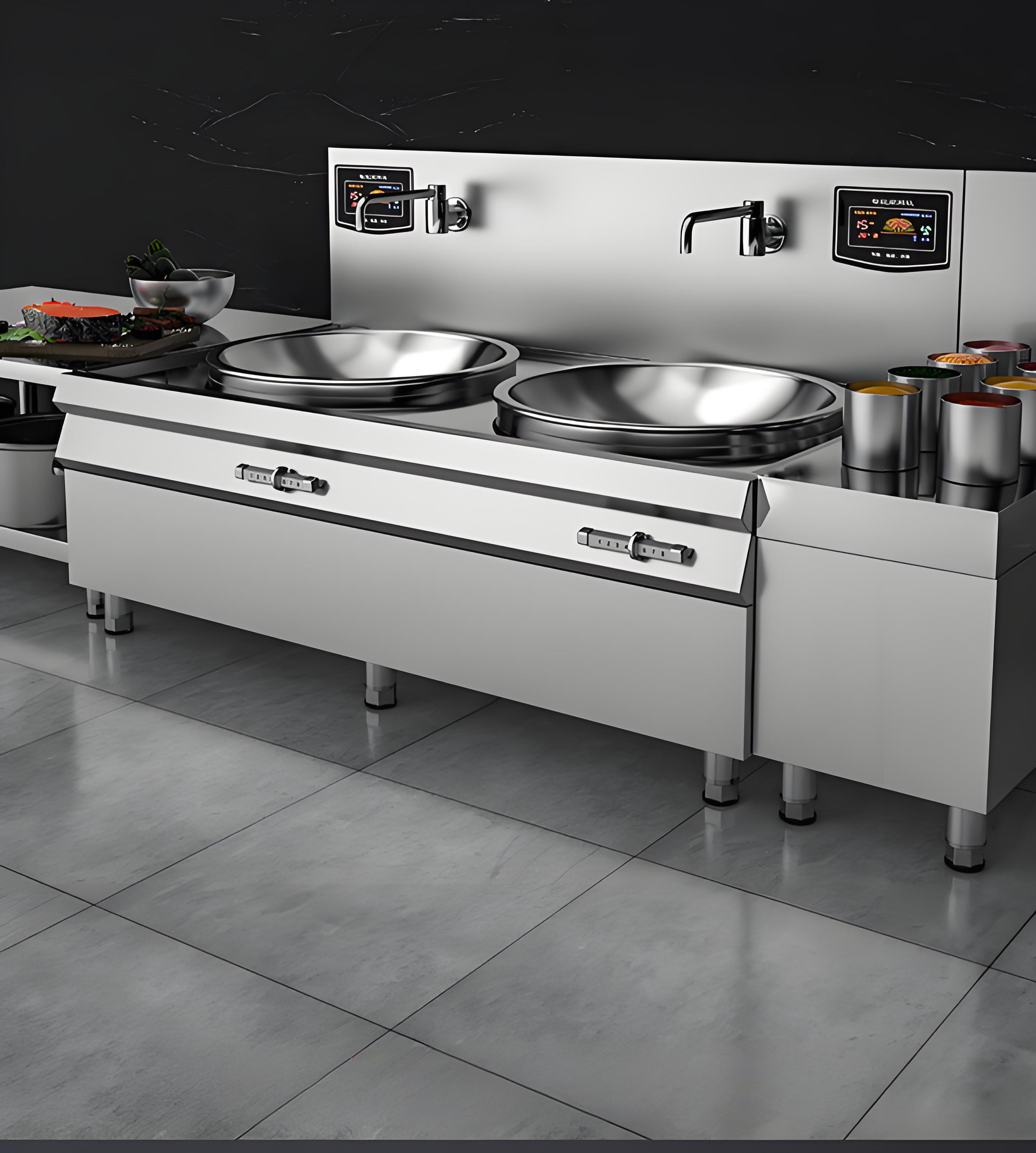
7. Frequently Asked Questions
To address additional concerns you might have, I’ve compiled some common questions and answers:
1. Is higher power always better for commercial induction cookers?
Not necessarily. Excessive power can increase electricity costs and overload circuits. Choose power based on restaurant size, cuisine, and electrical conditions.
2. What power is suitable for small restaurants?
Small restaurants (e.g., fast food outlets, coffee shops) typically need 3kW to 5kW induction cookers, sufficient for daily cooking needs.
3. How do I know if my kitchen’s wiring can support a high-power induction cooker?
Hire a professional electrician to check the power supply type (single-phase or three-phase), cable specifications, and distribution box capacity. High-power models (20kW+) usually require three-phase power and cables over 10 square millimeters.
4. How are electricity costs for commercial induction cookers calculated?
Electricity cost = Power (kW) × Usage time (hours) × Electricity rate ($/kWh). For example, a 10kW cooker running 5 hours at $0.15/kWh costs $7.50.
5. What’s the difference between commercial and household induction cooker power?
Household models range from 1.5kW to 2.2kW, suitable for small portions. Commercial models range from 3kW to 35kW, designed for high-intensity, continuous use.
8. Final Thoughts
Choosing the right power for a commercial induction cooker may seem technical, but by understanding your needs and considering restaurant size, cuisine, and electrical conditions, you can find the perfect fit. My advice? Don’t chase high power blindly or focus solely on price. Communicate with suppliers and test equipment in person to ensure you get a cooker that meets your needs.
If you have more questions about COMMERCIAL induction cookers—whether about installation, maintenance, or brand selection—feel free to reach out, and I’ll do my best to help. I hope this article sparks some inspiration for your catering business and wish your kitchen continued success!
